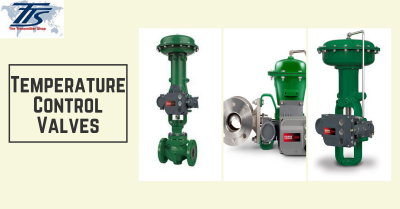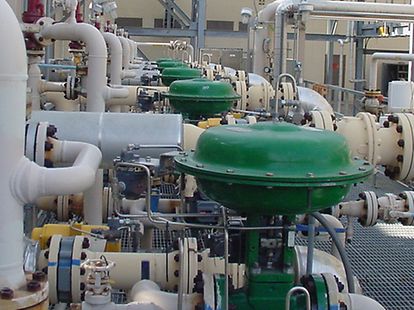Innovative Control Valves: Enhancing Precision and Reliability
Innovative Control Valves: Enhancing Precision and Reliability
Blog Article

Maximize Power Financial Savings and Convenience With Advanced Structure Automation Controls
In the world of contemporary design and center monitoring, the combination of innovative structure automation regulates stands as an essential improvement. The convergence of technology and sustainability has birthed a new era where energy effectiveness, comfort optimization, and functional streamlining are no more distant goals however obtainable truths. By harnessing the power of automation, structures can adapt, respond, and develop in ways that were once unthinkable. The capacity for significant power cost savings and enhanced convenience is not just an opportunity but an assurance waiting to be fulfilled. This standard change in building administration holds the key to opening a world where ecological conscientiousness and resident wellness harmoniously exist side-by-side within the walls of our frameworks.
Energy Performance Advantages
Power performance advantages can substantially lower power intake and functional costs in structures. Energy-efficient systems, such as advanced building automation controls, can optimize the use of sources like illumination, home heating, and cooling, leading to reduced power expenses over time.
Furthermore, enhanced power efficiency can prolong the life-span of building equipment and systems. By running a lot more efficiently, heating and cooling systems, lighting fixtures, and various other building parts experience much less deterioration, resulting in minimized maintenance and replacement prices. Additionally, energy-efficient structures commonly command greater residential or commercial property values and rental prices, supplying long-term economic advantages to owners.
Furthermore, power efficiency can improve occupant convenience and productivity. Effectively controlled interior environments with optimum lighting and thermal conditions develop a more positive and favorable work space, causing boosted employee satisfaction and performance. Overall, the power efficiency advantages related to advanced structure automation controls are diverse, including expense financial savings, ecological stewardship, and resident wellness.
Boosted Convenience Control
Enhancing comfort control in building atmospheres calls for a sophisticated integration of sophisticated automation systems for ideal owner well-being. By utilizing sophisticated building automation controls, centers can customize the interior setting to fulfill the certain demands and preferences of occupants. These systems allow accurate guideline of temperature level, lights, and air flow, developing a productive and comfortable environment. Resident fulfillment and performance are very closely connected to thermal convenience, making it vital to have systems in location that can adjust to altering problems in real-time.
Boosted comfort control exceeds fundamental temperature modifications. It includes functions such as individualized settings, occupancy sensing units, and natural light utilization to develop a vibrant and responsive setting. By integrating these advanced controls, structures can not only boost convenience but additionally enhance power effectiveness by optimizing system procedures based on real occupancy and use patterns. Ultimately, focusing on resident convenience with innovative automation systems causes a more delightful and healthier interior environment.
Operational Effectiveness Improvements

Additionally, the implementation of real-time tracking and analytics devices allows structure drivers to identify power inadequacies and pop over to this web-site operational abnormalities without delay. By constantly monitoring energy use patterns and system efficiency metrics, adjustments can be made in real-time to enhance power consumption and make sure peak functional efficiency. control valves. Furthermore, including demand reaction methods right into building automation controls can even more improve functional efficiency by dynamically changing power use based upon grid conditions and prices signals
Indoor Environment Optimization
Efficient indoor climate optimization is a basic aspect of building automation controls, making sure owners' comfort and health while maximizing power savings. By using sophisticated sensing units and controls, building automation systems can continuously keep track of and change temperature, moisture degrees, air quality, and air flow to create an ideal indoor setting. Maintaining comfy and constant problems not only boosts occupant complete satisfaction but likewise boosts productivity and overall health.
Indoor climate optimization additionally plays an essential duty in power effectiveness. By fine-tuning ventilation, air conditioning, and heating systems based upon real-time information and tenancy patterns, building automation controls can substantially decrease power usage - control valves. For example, carrying out methods such as demand-controlled ventilation and thermal zoning can aid minimize energy waste while making certain that each location of the structure gets the necessary conditioning.

Sustainable Setting Production
Structure automation manages not just enhance indoor climate problems for power effectiveness and passenger comfort but also lay the structure for developing a lasting atmosphere with tactical administration of sources and systems. By integrating advanced structure automation modern technologies, such as sensing units, actuators, and intelligent software, centers can adjust and monitor power usage in real-time to minimize waste and lower their carbon footprint. These systems make it possible for anticipating maintenance, recognizing prospective problems before they rise and enhancing equipment efficiency to improve longevity and performance.
In addition, sustainable environment production prolongs past power management to incorporate water preservation, waste reduction, and indoor air top quality enhancement. Building automation controls can control water usage, identify leaks, and make certain appropriate waste disposal methods, adding to general sustainability initiatives. Furthermore, by keeping track of and regulating ventilation and purification systems, these innovations boost occupant health and wellness and productivity while reducing power Website consumption connected with heating and cooling procedures.
Conclusion
To conclude, advanced building automation manages deal significant benefits in regards to power savings, comfort control, functional efficiency, indoor climate optimization, and developing a lasting environment. By executing these controls, structures can attain optimal performance while minimizing power consumption and enhancing owner convenience. It appears that making use of advanced automation innovation is critical in boosting structure directory efficiency and creating a more sustainable future.
Energy effectiveness advantages can dramatically reduce energy consumption and operational costs in buildings. In general, the energy efficiency benefits associated with advanced building automation controls are multifaceted, encompassing cost savings, environmental stewardship, and occupant well-being.
Additionally, incorporating need feedback methods into building automation controls can further boost operational efficiency by dynamically adjusting power usage based on grid conditions and pricing signals.
Structure automation manages not only maximize indoor climate problems for power effectiveness and occupant comfort yet likewise lay the foundation for creating a sustainable setting with calculated management of resources and systems.In verdict, progressed building automation controls deal considerable benefits in terms of energy savings, convenience control, functional effectiveness, indoor climate optimization, and producing a sustainable setting.
Report this page